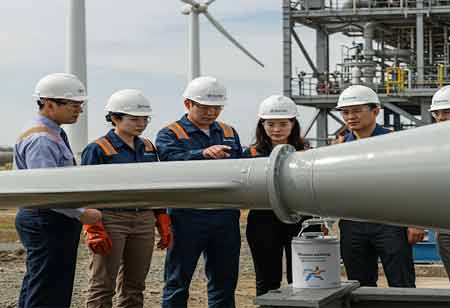Thank you for Subscribing to Construction Business Review Weekly Brief
Specials
- Apartment and Condominium Contractors Canada
- Decking Canada
- Architectural Glass Europe
- MEP APAC
- Construction Saudi Arabia
- German Apartment and Condominium Contractors
- Construction Law APAC
- Outdoor Construction
- Foundation Construction Canada
- MEP Canada
- Kitchen and Bath
- Cold Storage Construction APAC
- Precast Concrete Europe
- Construction Staffing Europe
- Pre-Construction Services
- Flooring System APAC
- Scaffolding Canada
- Swimming Pool Construction Canada
- Construction Management Canada
- Cold Storage Construction Canada
- Flooring Systems Europe
- Residential Construction
- Concrete Canada
- Construction Cladding Europe
- Construction Cladding APAC
- Concretes, Aggregates and Construction Materials APAC
- Concretes, Aggregates and Construction Materials Europe
- Commercial Contractors Europe
- Commercial Contractors APAC
- Dummy
- Construction Insulation, Coating and Waterproofing
- Construction Management APAC
- Landscaping Canada
- Construction Coating Europe
- Construction Tech Startups Europe
- Insulation Services Europe
- Mechanical Contractor Canada
- Mould Remediation and Testing Europe
- Swimming Pool Construction APAC
- Building Sealing Solutions Europe
- Construction Engineering Services
- Mechanical Electrical and Plumbing
- Roofing Systems Europe
- Architectural Glass APAC
- Startups APAC
- Construction Forensic and Owners Representative
- Flooring System
- Waterproofing APAC
- Wall Systems
- Safety and Compliance Europe
- Construction Equipment
- Modular and Prefab Construction
- Architectural Glass
- Construction MENA
- Construction Demolition and Recycling Europe
- Modular Construction Europe
- Construction Interiors
- Steel Building APAC
- HVAC
- Doors and windows
- Modular Construction APAC
- Building Information Modeling APAC
- Sustainable Construction APAC
- Building Restoration and Maintenance
- Commercial Contractors
- Specialty Construction
- Construction Engineering Canada
- Construction Engineering MENA
- Modular Construction Canada
- Construction Demolition Canada
- Roofing and Siding Systems
- Construction Latam
- Construction Staffing
- Roofing Systems APAC
- Construction Consulting
- Steel Building Europe
- Construction Demolition and Recycling APAC
- Safety and Compliance APAC
- Concretes, Aggregates and Construction Materials
- Construction Cladding
The Sustainable Approach of Structural Engineers in Building Durability
Building engineers ensure occupant safety, enhance functionality and improve the resilience of buildings in today's urban environment.

By
Construction Business Review | Thursday, November 30, 2023
Stay ahead of the industry with exclusive feature stories on the top companies, expert insights and the latest news delivered straight to your inbox. Subscribe today.
Structural engineering is committed to safety and sustainability to create structures that enhance our quality of life while minimizing environmental impact.
FREMONT, CA: Buildings and infrastructure rely on structural engineering for safety and longevity. It encompasses designing, analyzing, and assessing structures to withstand various forces and loads, ranging from gravity and environmental factors to human activities. Building engineers ensure occupant safety, enhance functionality and improve the resilience of buildings in today's urban environment.
Safety is paramount in structural engineering. Buildings and structures are subjected to various forces and loads, including wind, seismic activity, snow, and live loads from occupants and equipment. With the expertise of structural engineers, buildings would be protected from structural failures that could result in catastrophic consequences. Structural engineers evaluate these forces and design buildings and infrastructure to withstand them safely.
Structural engineering also considers potential hazards and emergencies, such as fires and natural disasters. Engineers work on fire-resistant designs, evacuation plans, and structures that can withstand earthquakes and hurricanes. This proactive approach to safety is essential for protecting lives and property.
Structural engineers ensure that buildings have a long and durable lifespan. This involves selecting appropriate materials, designing structures that can withstand aging and wear, and considering future maintenance needs. Longevity is particularly important in infrastructure projects, where repair or replacement costs can be significant.
Structures' durability is determined by the materials they are made of. Structural engineers must consider corrosion resistance, weathering, and material fatigue. They also factor in environmental sustainability by exploring options like recycled materials and energy-efficient designs, contributing to a more sustainable built environment.





